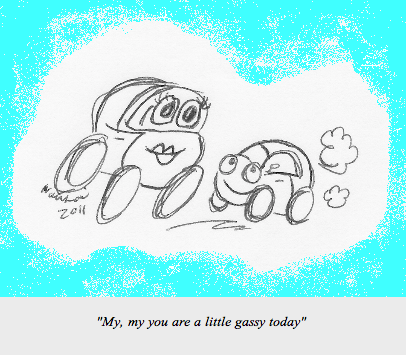Hear ye, hear ye: how can I tell if my child hears?
As I watched the movie, I was reminded about how children depend on their senses to learn about the world. Starting today, Two Peds in a Pod will bring you periodic posts about the early development of senses. We start with hearing. Unlike eyesight, which is limited at birth, babies are usually born with normal hearing. Before leaving the hospital after birth, or by two weeks of age, your newborn should receive a hearing test. Then, at every well child check, your child’s health care provider will ask you questions to confirm your child’s hearing remains the same. Even though they are unable to localize where sound is coming from, newborns will startle to new or sudden sounds and their eyes will open wider in response to the sound of your voice. All babies babble, even deaf ones, but language progression will stop in children who cannot hear. By six months, kids usually babble one syllable at a time. By nine months, children will produce syllables that sound like whichever language they hear the most. At this point they should also respond to their name. Babies who fail to meet these milestones may do so because they cannot hear. For older kids, hearing screening may be conducted in schools or the pediatrician’s office. The American Academy of Pediatrics recommends formal hearing screens starting at four years old. These screening tests can detect subtle hearing loss that parents did not notice. Kids who fail the screen should have a more comprehensive hearing evaluation by an audiologist. Many kinds of hearing loss are either reversible or manageable. The earlier the diagnosis the better. Sometimes speech, behavior, or attention problems are secondary to hearing difficulties. School aged children may mispronounce words because they cannot hear sounds clearly. These children commonly do not distinguish well between the “s,” “ch,” and “sh” sounds (please click here to review language development). Symptoms attributed to Attention Deficit Hyperactivity Disorder such as difficulty focusing or inattentiveness may actually result from hearing loss. Some kids who “just don’t listen” to adults simply can’t hear well enough to follow directions. As your child’s hearing loss progresses, you may notice your child’s language regresses, or that your child turns the volume up on the TV. Your child may accuse you of mumbling or ask you to often repeat questions. Although a common myth, a child who talks loudly is not necessarily deaf. After all, a child does not need to raise his own voice in order to understand himself. Finally, I should mention signs of “selective hearing loss.” Many parents describe this form of “hearing loss” to me in the office. In these cases, a child does not hear her mom say “Clean your room,” yet hears her mom whisper “Let’s go out for ice cream.” Julie Kardos, MD with Naline Lai, MD
 I just watched “The Miracle Worker” with my oldest son. This classic 1962 movie depicts Helen Keller, who was deaf and blind, struggling to understand language, with the help and supreme patience of her determined teacher Annie Sullivan.
I just watched “The Miracle Worker” with my oldest son. This classic 1962 movie depicts Helen Keller, who was deaf and blind, struggling to understand language, with the help and supreme patience of her determined teacher Annie Sullivan.
We address the topic of listening, as opposed to hearing, in our next post.
©2011 Two Peds in a Pod®

 Recently I’ve seen some very tired parents of newborns in my office.
Recently I’ve seen some very tired parents of newborns in my office.  Cottage cheese like curds coat the inside of your baby’s tongue and inner cheeks. What is this white stuff that won’t wipe off? Not breast milk, not formula, it’s thrush.
Cottage cheese like curds coat the inside of your baby’s tongue and inner cheeks. What is this white stuff that won’t wipe off? Not breast milk, not formula, it’s thrush. I often pass a parent on her way out of my office carrying an infant in an infant car seat. As I stop to elicit a goodbye smile from the baby, I check to see that the car seat straps are buckled properly. I say to the parent, please make sure that the cross strap is across his chest, not down at his lap. And please tighten the shoulder straps; I should not be able to pinch the strap above his shoulders. These are too loose.
I often pass a parent on her way out of my office carrying an infant in an infant car seat. As I stop to elicit a goodbye smile from the baby, I check to see that the car seat straps are buckled properly. I say to the parent, please make sure that the cross strap is across his chest, not down at his lap. And please tighten the shoulder straps; I should not be able to pinch the strap above his shoulders. These are too loose. Graco was founded nearly 70 years ago, and Evenflo and Child Craft have been around even longer. In fact, most of the prominent baby supply manufacturers have been in the baby business for decades, so I am always appalled when their products are recalled. Haven’t they perfected the art of manufacturing safe baby products yet? Drop-down side cribs are the latest example in faulty designs. In the past year, manufacturers announced the recall of many drop side cribs. Ultimately, last week, the
Graco was founded nearly 70 years ago, and Evenflo and Child Craft have been around even longer. In fact, most of the prominent baby supply manufacturers have been in the baby business for decades, so I am always appalled when their products are recalled. Haven’t they perfected the art of manufacturing safe baby products yet? Drop-down side cribs are the latest example in faulty designs. In the past year, manufacturers announced the recall of many drop side cribs. Ultimately, last week, the  My husband and I had waited three long years for “the phone call” letting us know who would become our baby. Only three short weeks prior to boarding a plane to China, we got the news we would not be bringing just one beautiful girl home from China, but TWO. Twins. We should have known right at that moment we would begin living a life of improvisation.
My husband and I had waited three long years for “the phone call” letting us know who would become our baby. Only three short weeks prior to boarding a plane to China, we got the news we would not be bringing just one beautiful girl home from China, but TWO. Twins. We should have known right at that moment we would begin living a life of improvisation. A few days ago, I spoke with the faculty of a local early childhood education center about flu vaccine myths. See how you do on the true and false quiz I gave them:
A few days ago, I spoke with the faculty of a local early childhood education center about flu vaccine myths. See how you do on the true and false quiz I gave them: